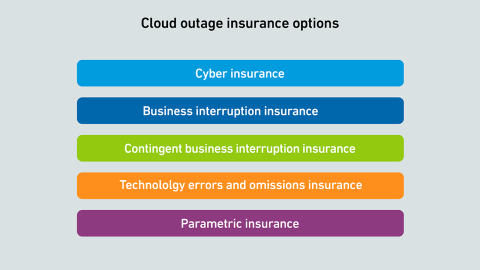Industry stakeholders recognize that to truly understand IT infrastructure efficiency, data center operators need to report a facility work per unit of energy metric. Most operators are, however, unprepared to calculate this metric.
filters
Explore All Topics
Preliminary calculations by Uptime Intelligence suggest the initial impact of generative AI on global data center power use is low - but it will rise quickly as adoption increases. How far generative AI will go remains unclear.
The US Energy Information Administration has obtained an order requiring cryptocurrency mining operations to report their energy use. It is likely that traditional data centers will also be required to report energy consumption in 2024.
Cloud-related outages pose a serious financial risk to operators of mission-critical digital infrastructure. And a rising number of high-cost outages suggests that insurers may have a role to play.
Organizations develop strict security policies and practices to reduce exposure to cyberattacks. An ineffective policy only increases the cyber risk both to the data center and across IT in general.
Data center operator shifts typically range from seven to 12 hours. Longer shifts are often preferred by employees, but can introduce significant risks.
The arrival of regulatorily mandated, climate-related financial disclosure and operational information and key performance indicators reporting for IT operations in 2024 and beyond requires the Digital Infrastructure industry to reimagine its…
Data center budgets are expected to increase in 2024 for most organizations, but ongoing supply chain issues and staffing challenges may restrict investments, according to recent Uptime Intelligence survey data.
Operators of data centers in the UK have voiced concerns over the proposed resiliency and cybersecurity regulations that are aimed specifically at providers of colocation and "co-hosting" services.
New EU legislation will raise recycling and reporting standards for batteries, regardless of chemistries. Although motivated by battery use in electric vehicles, the regulations also place obligations on data center operators.
Uptime Institute's 2024 Data Center Resiliency Survey (n=919) focuses on data center resiliency issues and the impact of outages on the data center sector.The attached data files below provide full results of the survey, including data cuts based on…
The EU Code of Conduct on Data Centre Energy Efficiency started out as a voluntary initiative but is increasingly being applied as a standard. This report describes the code's technical contents and assessment process.
There is more to managing server power than just conserving energy when the machine is idle. Another side to optimizing energy performance involves setting processor performance levels appropriate for the application.
Air-assisted direct liquid cooling systems offer trade-offs that make them attractive to operators looking to address server cooling and rack density challenges - and are relatively easy to install and maintain.
This update examines the differences between machine learning and traditional software development and outlines the terms and definitions that may help digital infrastructure operators to understand the role and impact of AI.
 Jay Dietrich
Jay Dietrich

 Andy Lawrence
Andy Lawrence
 Daniel Bizo
Daniel Bizo


 John O'Brien
John O'Brien
 Adam Page
Adam Page

 Michael O'Neil
Michael O'Neil

 Rose Weinschenk
Rose Weinschenk


 Douglas Donnellan
Douglas Donnellan

 Max Smolaks
Max Smolaks

 Rosa Lawrence
Rosa Lawrence

 Anthony Sbarra
Anthony Sbarra
 Laurie Williams
Laurie Williams

 Dr. Tomas Rahkonen
Dr. Tomas Rahkonen


 Jabari Williams-George
Jabari Williams-George

